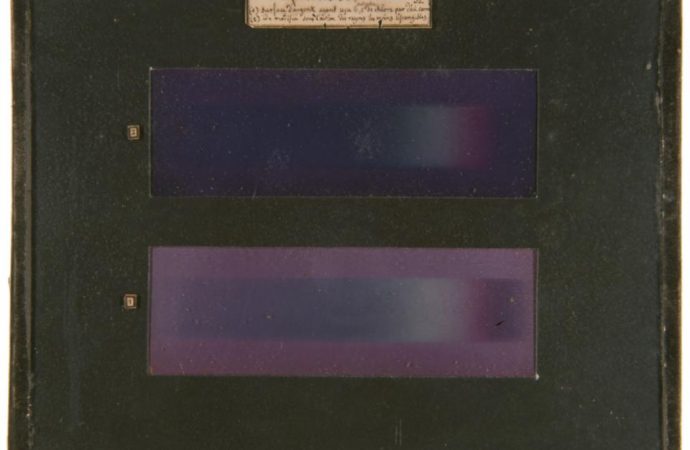In the mid-19th century scientists were diligently at work experimenting with methods to capture the solar spectrum in images. French physicist Edmond Becquerel was the first to succeed. In 1848 he produced what he called “photochromatic images” which are considered to be the world’s first color photographs.
Source: Forbes
With the rise of smartphones, people carry high-definition cameras in their pockets at all times, making it easy to take for granted our ability to produce colorful images for sharing across social media at any time. The sensors inside cameras which read wavelengths across the light spectrum and translate them into reproductions of the brightly colored landscapes we see with our own eyes is so common it is no longer a source of intrigue.
This is why it might be hard to imagine that Becquerel’s images have been the subject of a 170-year-old scientific debate. The now-faded spectra of colors, like a smudge across a silver plate, displayed in the photochromatic images have been a mystery in terms of how they developed — until now. Researchers at the Centre de recherche sur la conservation in Paris, France, reproduced Becquerel’s photography process and discovered the colors were formed by silver metallic nanoparticles.
With the help of chemical analysis and morphology studies, the team ruled out a number of previously held hypotheses behind the nature of Becquerel’s photochromatic images. One popular theory suggested the colors came from the oxidation of silver salt used to form the sensitized layer, the sheet of silver on which the images appear. Proponents of the idea claimed the coloration was caused by an alteration to the chemical makeup of the layer of silver during exposure to light.
Yet spectroscopy studies revealed each separate color produced in the images had the same chemical composition and did not undergo any chemical change. This allowed the researchers to rule out this “pigment” theory which says the color pigment is caused through reactions with light.
The researchers explored another hypothesis claiming the images are a representation of interferential color, which would be the result of parallel and periodically placed silver planes causing standing waves. Electron microscopy ruled this theory out too, as the sensitized layers contained none of the expected microstructures about the size of the wavelength of each color shown.
For his photochromatic images, Becquerel used a sensitized layer made up of “silver photochloride”, a mixture of the chemical compounds silver chloride and silver subchloride. The researchers found the layers of color in the images were made up of silver nanoparticles within the matrix of silver chloride grains.
Further examination showed the nanoparticle size and distribution varied by color. For example, in a sample of the color blue there were an overall greater number of silver nanoparticles, while red represented more silver nanoparticles smaller than 25 nanometers and far less nanoparticles in the size range of 30 to 45 nanometers. This led researchers to put forward their plasmonic theory, named for the process by which silver nanoparticles absorb light.
They concluded that the silver nanoparticles in the sensitized layer reorganize based on the color, or energy, of light. The new organization of nanoparticles then absorbs all colors on the visible light spectrum, except for the color which caused the modification. Therefore, that is the color we see when looking at the images.
Electron energy spectroscopy studies confirmed the silver nanoparticles absorb light in the visible range, bringing the end to a long debate and solving the mystery of the world’s first color photographs.
Source: Forbes

































Leave a Comment
You must be logged in to post a comment.